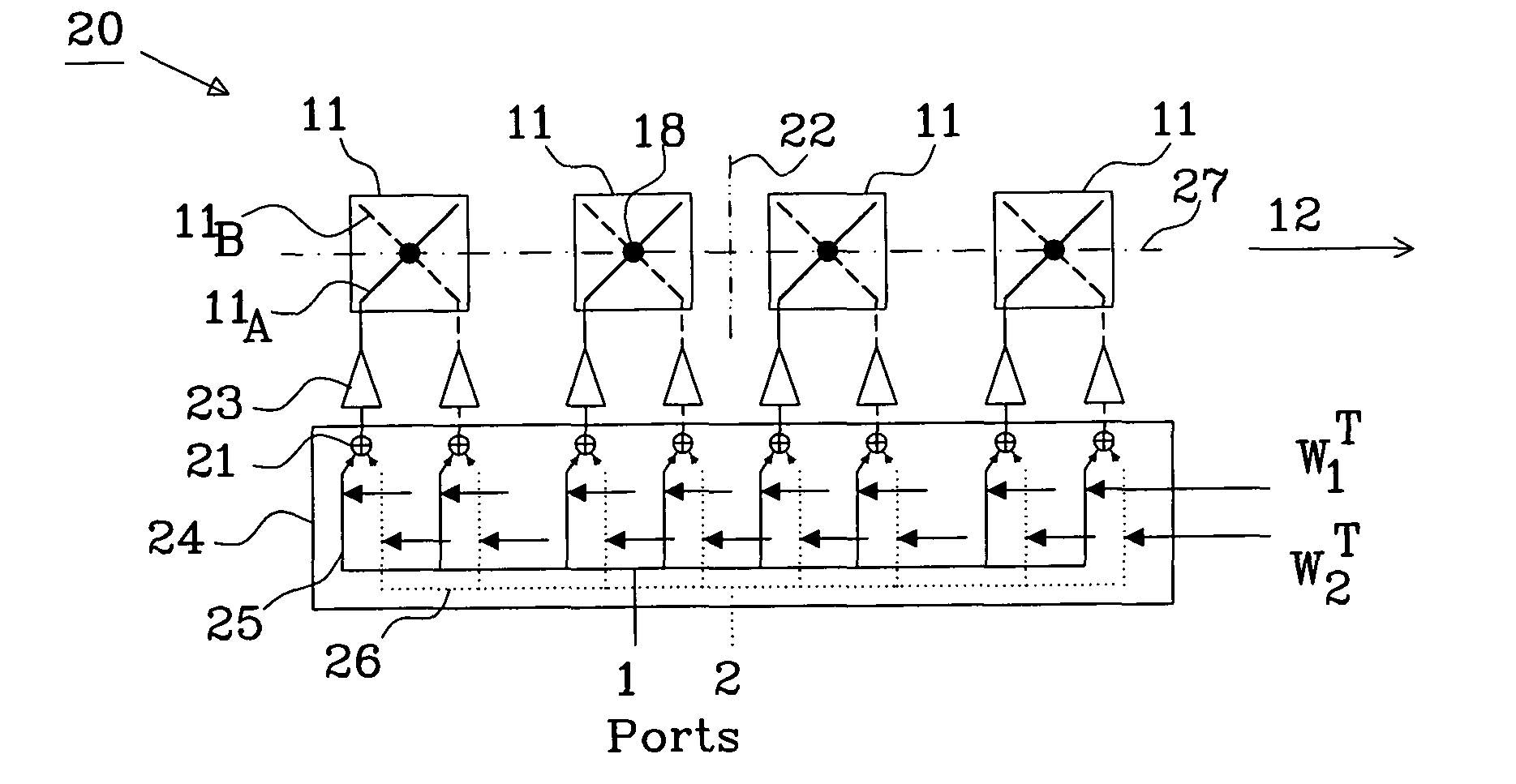Method of designing weight vectors for a dual beam antenna with orthogonal polarizations
a dual-beam antenna and weight vector technology, applied in diversity/multi-antenna systems, individually energised antenna arrays, polarisation/directional diversity, etc., can solve the problems of poor match between actual and desired beam shape, inefficient power utilization, etc., and achieve the effect of improving the radiation properties of the antenna
- Summary
- Abstract
- Description
- Claims
- Application Information
AI Technical Summary
Benefits of technology
Problems solved by technology
Method used
Image
Examples
example 1
[0063]The first weight matrix W1T used for generation of a first beam using four dual-polarized elements as described in connection with FIGS. 4 and 5 is:
W1T=[W1ATW1BT]=[w11Aw12Aw13Aw14Aw11Bw12Bw13Bw14B]=[0.5074j1.72241-j0.33421-j0.66840.5074j0.71980.5074j0.71981-j0.66841-j0.33420.5074j1.7224]
[0064]W1AT and W1BT are non-zero weight vectors.
[0065]The second weight matrix W2T for the second beam in this example is calculated using equation (3) and becomes:
W2T=[W2ATW2BT]=[w21Aw22Aw23Aw24Aw21Bw22Bw23Bw24B]=[0.5074j1.41921-j2.80741-j2.47320.5074j2.42180.5074-j0.71981j0.66841j0.33420.5074-j1.7224]
[0066]Resulting in a second weight matrix having non-zero weight vectors W2AT and W2BT.
[0067]The half power beam width (hpbw) for the element is in the example set to 105 deg and the hpbw for the desired, sector covering beam, is set to 65 deg. Element separation, i.e. separation between the first phase centres and the second phase centres, respectively, is set to 0.5 wavelengths.
[0068]The power ...
PUM
 Login to View More
Login to View More Abstract
Description
Claims
Application Information
 Login to View More
Login to View More - R&D
- Intellectual Property
- Life Sciences
- Materials
- Tech Scout
- Unparalleled Data Quality
- Higher Quality Content
- 60% Fewer Hallucinations
Browse by: Latest US Patents, China's latest patents, Technical Efficacy Thesaurus, Application Domain, Technology Topic, Popular Technical Reports.
© 2025 PatSnap. All rights reserved.Legal|Privacy policy|Modern Slavery Act Transparency Statement|Sitemap|About US| Contact US: help@patsnap.com



